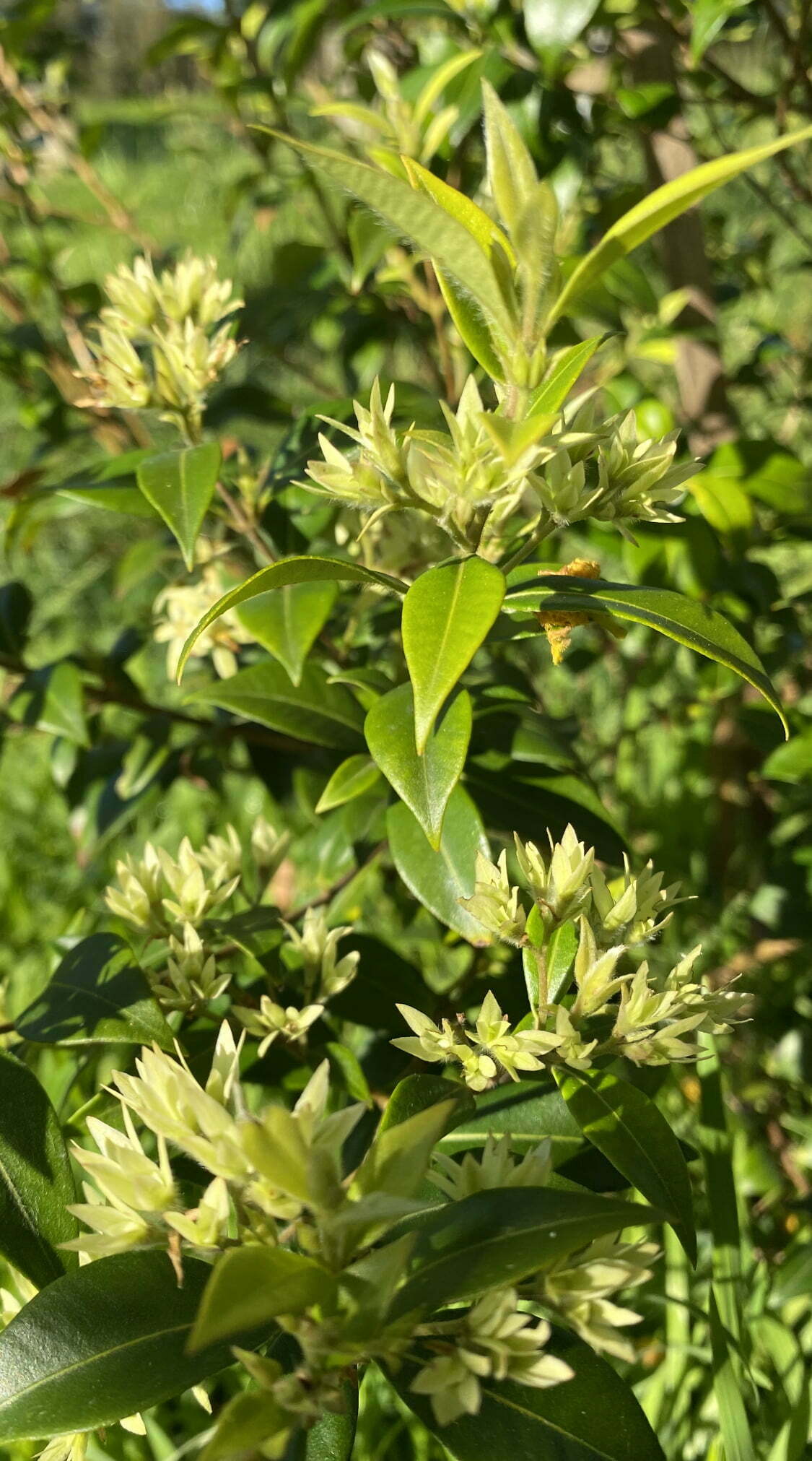
Backhousia myrtifolia
Common name: Cinnamon myrtle
· Full sun/part shade
· Height 7 metres
· Well drained sandy soil
· Edible leaves & flowers
· Good for substitutes for cinnamon in cooking & also made into tea
· Leaves taste like cinnamon
· Cultural uses
Looks like: It is a small tree, growing to about 7 metres. The leaves of Backhousia myrtifolia start out light and bright green when they are young and become darker with age. The flowers are star-shaped. In the wild, this plant can reach heights of up to 7 metres.In a home garden, you’re looking at about a 3 metre height. The tree has naturally dense foliage which makes it an excellent shade tree. It also works well as a screen or windbreak and you can keep it smaller with regular pruning.
Habitat & Growing: The genus Backhousia includes ten species, all of which are confined to the coastal rainforest areas of New South Wales and Queensland. Commonly referred to as ‘myrtles’ this group of plants, comprising trees and shrubs with strongly aromatic foliage, is included in the Myrtaceae family. Found in the rainforests of subtropical Australia, all the way from Bega on the NSW south coast, to Fraser Island off Queensland. This plant is known for the snow-white colour of its flowers – this has made it popular as both a domestic tree but is also an internationally exported product. Grows well in most soils and climates. It can handle long, dry summers if it gets regular water. The cinnamon myrtle tree grows best in full sun, but can also grow happily under part-shade or full shade.
Traditional uses: Often called iron wood and grey myrtle in addition to cinnamon myrtle. The rainforest tree species was first discovered and used by the indigenous communities of Australia, especially because the plant produces oils that have a cinnamon-like aroma, and have antibacterial and anti fungal properties.

